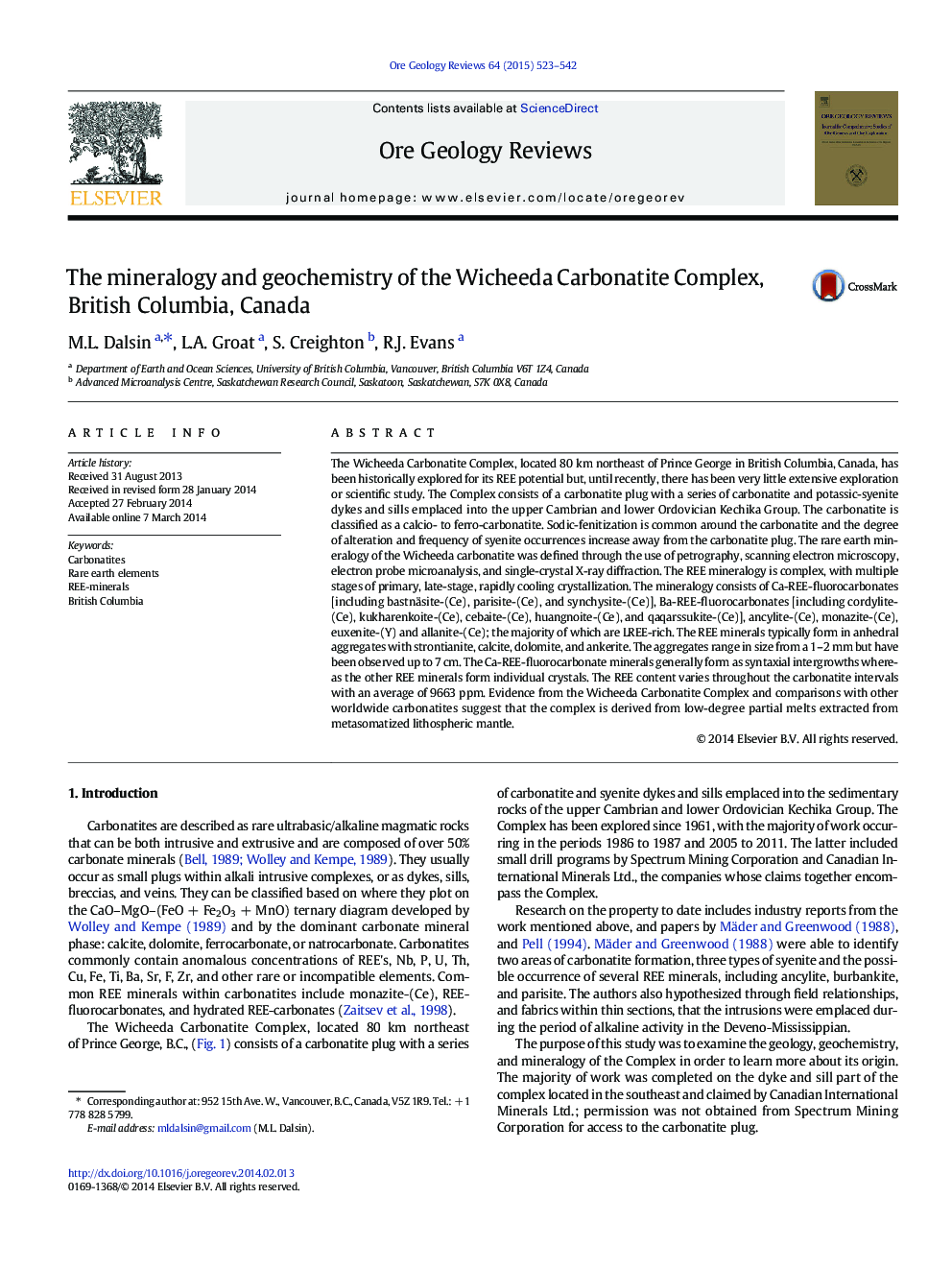| Article ID | Journal | Published Year | Pages | File Type |
|---|---|---|---|---|
| 4697122 | Ore Geology Reviews | 2015 | 20 Pages |
•We identified multiple stages of Ca-REE-fluorocarbonates formation.•We identified several Ba-REE-fluorocarbonate phases.•The Complex shows similarities to several deposits that are economic for LREE.
The Wicheeda Carbonatite Complex, located 80 km northeast of Prince George in British Columbia, Canada, has been historically explored for its REE potential but, until recently, there has been very little extensive exploration or scientific study. The Complex consists of a carbonatite plug with a series of carbonatite and potassic-syenite dykes and sills emplaced into the upper Cambrian and lower Ordovician Kechika Group. The carbonatite is classified as a calcio- to ferro-carbonatite. Sodic-fenitization is common around the carbonatite and the degree of alteration and frequency of syenite occurrences increase away from the carbonatite plug. The rare earth mineralogy of the Wicheeda carbonatite was defined through the use of petrography, scanning electron microscopy, electron probe microanalysis, and single-crystal X-ray diffraction. The REE mineralogy is complex, with multiple stages of primary, late-stage, rapidly cooling crystallization. The mineralogy consists of Ca-REE-fluorocarbonates [including bastnäsite-(Ce), parisite-(Ce), and synchysite-(Ce)], Ba-REE-fluorocarbonates [including cordylite-(Ce), kukharenkoite-(Ce), cebaite-(Ce), huangnoite-(Ce), and qaqarssukite-(Ce)], ancylite-(Ce), monazite-(Ce), euxenite-(Y) and allanite-(Ce); the majority of which are LREE-rich. The REE minerals typically form in anhedral aggregates with strontianite, calcite, dolomite, and ankerite. The aggregates range in size from a 1–2 mm but have been observed up to 7 cm. The Ca-REE-fluorocarbonate minerals generally form as syntaxial intergrowths whereas the other REE minerals form individual crystals. The REE content varies throughout the carbonatite intervals with an average of 9663 ppm. Evidence from the Wicheeda Carbonatite Complex and comparisons with other worldwide carbonatites suggest that the complex is derived from low-degree partial melts extracted from metasomatized lithospheric mantle.
